Basic Physics Science-[Motion Straight]
Physics is one of the basic sciences,physics, including chemists who study the molecular structure, the paleontologists that are reconstructing how dinosaurs work, and the climatologists who study how human activity affects the atmosphere and the oceans.
I will discuss or repeat a little about basic physics
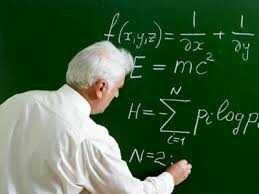
https://www.google.co.id/imgres?imgurl=https://2.bp.blogspot.com/-ivlngCo1lVc/WK5kZb-HglI/AAAAAAAAAFQ/0AquNSSVn7w1i6bq99hCLGxqpn4G9ETvgCLcB/w1200-h630-p-k-no-nu/kuantum.png&imgrefurl=http://begawantung.blogspot.com/2017/02/spiritualitas-fisika-kuantum.html&h=142&w=272&tbnid=ohrtT8FIMQG-HM&tbnh=142&tbnw=272&usg=__tx_oYIb-6VvKR2LDPaA-u8jZBH8=&docid=xGKjs_kC2UtGmM
Distance of Movement
Distance and displacement have different meaning. Distance is defined as the length of a path taken by an object within a certain time interval, and is a scalar quantity. Displacement is the change of position of an object within a certain time interval and is a vector quantity.
for example, travel from point A to point B as far as 8 meters, then turn right as far as 6 meters and stop at C. The total journey traveled by is 8 meters plus 6 meters, ie 14 meters. The total journey of 14 meters is called distance traveled. Unlike the distance, the displacements are as follows:
The initial position at point A and the final position at point C whose magnitude can be calculated using the phy-tagoras formula.
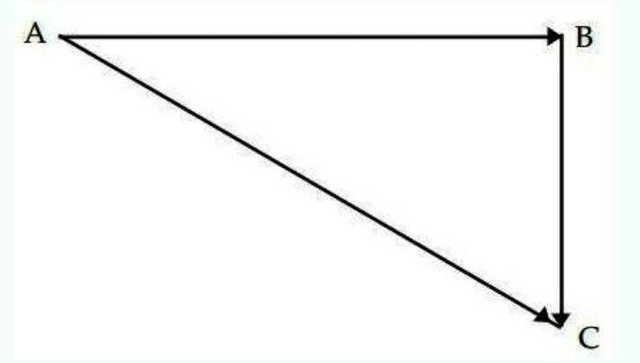
displacement
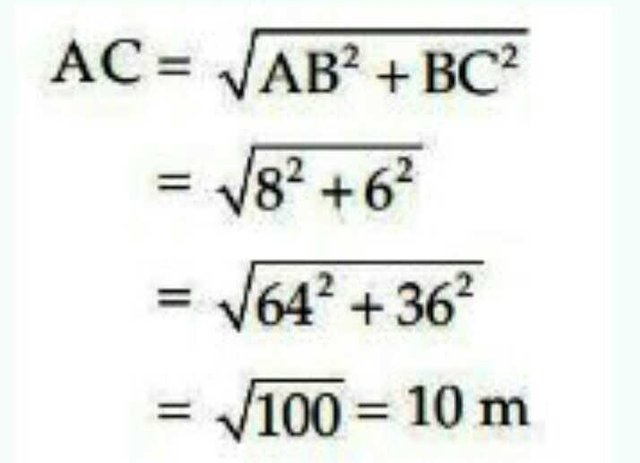
Difference of Distance and Displacement
What is the difference between distance and displacement? In Physics, distance and displacement are two different magnitudes. Moving objects always change the position or distance to the reference.
Distance changes take time. What is the distance for each time unit?
The difference between distance and displacement is as follows:
- Distance is always viewed from the path traveled by moving objects, while the displacements are reviewed only from the initial position and the final position.
- Distance does not take into account the direction of motion of objects, while the displacement takes into account the direction of motion of the object.
- Distance is a scalar scale because it only has a large course, while the displacement is a vector quantity.
The distance traveled of a moving object is affected by time. Similarly, the magnitude of the movement of the object is proportional to time. The greater the distance traveled, the longer the time it takes or the greater the movement of the object the greater the time it takes.
Speed and Rate
In everyday life people often use the word speed even though the intended is actually the speed. For example, the train was moving at a speed of 80 km / h. This statement is actually not quite right, because if you want to express the speed, the direction should be mentioned. To be correct the statement must be changed to the train was moving at speeds of 80 km / h to the west. In physics, speed and speed are two different terms. Speed is the fast slow change in distance to time and is a scalar scale whose value is always positive, so do not care about direction. Speed is measured using a speedometer. Speed is the fast slow change of the position of an object over time and is the vector quantity, so it has a direction. Speed is measured using a velocitometer.
Average Speed
An object that moves within a certain time interval and in its motion never stops even for a moment, usually it does not always move with a fixed speed.
note the picture below
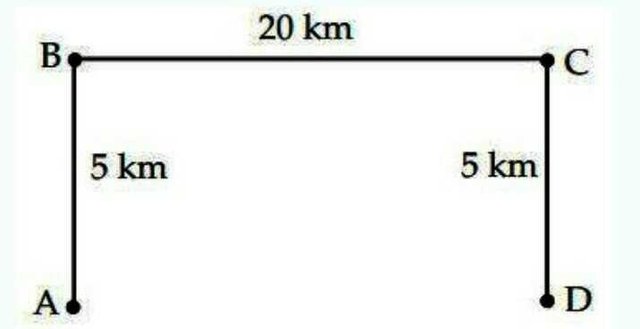
I went to campus from home (point A) which is 20 km away by using a motorcycle. As I passed the straight path, I increased the speed of his motorcycle to a certain speed and maintained it. When it passes round the corner (point B and C), I reduce the speed of the motorcycle and then raise it again. Toward the arrival of the campus (point D), I slow down the pace until it stops. After arriving at kanpus within 1 hour, I realized that the number on the speedometer has increased by 30 Km. This shows the distance I traveled to the campus of 30 km.
On my way from college to college, my speed is definitely not always fixed. While on a straight road the speed is great and when the bend of its speed decreases. Based on the illustration, the average speed is defined as a divide between the total distance traveled by the time to travel.
What about my average speed?
Average velocity is the quotient between the displacement and the time interval. Mathematically it can be written as follows.
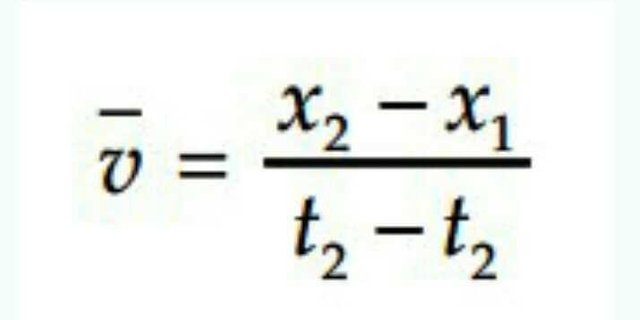
Information :
- v = Average velocity (m / s)
- x1 = starting point (m)
- x2 = end point (m)
- t1 = start time (s)
- t2 = end time (s)
Instantaneous Speed
Average speed and speed describe speed and speed in a certain distance. The distance and total displacement of an object motion may be either long or short, eg 500 km or 1 m. How can you know the speed or instantaneous speed of a moving object at a given time?
When you ride a motor vehicle, to know the speed of a moment you just look at the numbers pointed to the needle on the speedometer. The speed changes will be followed by changes in the position of the needle on the speedometer.
To determine the speed of a moment, you just mention the amount of speed a moment plus mention the direction.
The momentary velocity of an object is the velocity of the object at a given time. To determine it you need to measure the distance at a very short time interval (At), for example 1/10 of a second or 1/50 of a second. Mathematically can be expressed as follows.
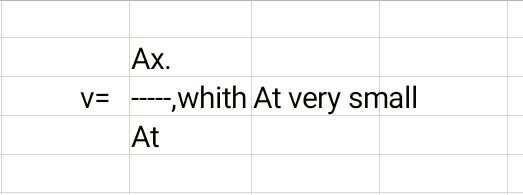
Acceleration
Acceleration is the change of speed and or direction within a certain time interval. Acceleration is a vector quantity. Acceleration is positive if the velocity of an object increases over a period of time. Acceleration is negative if the velocity of an object decreases over a period of time.
Average Acceleration
Any object undergoing a change of velocity, whether of magnitude or direction alone or both, will be accelerated. The average acceleration (a) is the result between the change of velocity (Av) and the time interval used during the speed change (At). Mathematically it can be written as follows:

information:
- (a) average acceleration (m / s2)
- (Av) change of speed (m / s)
- (At) interval (s)
- (v1) initial speed (m/s)
- (v2) final speed (m/s)
- (t1) start time (s)
- (t2) final time (s)
Discussion

Average acceleration direction = east. Average acceleration = 2 m / s2 = 2 m / s per 1 second, meaning that on average the car speed increased 2 m / s every 1 second. If the large acceleration of the car is constant then the big speed of the car always increases 2 m / s every 1 second. If the large acceleration of the car is not constant then large car speed does not always increase 2 m / s every 1 second. It may be that the speed of the car increases 1 m / s in the first second, then increases 3 m / s on the second second. But on average, when moving for 5 seconds, the car's speed increased by 2 m / s every 1 second.
Instantaneous Acceleration
Instantaneous acceleration is a change of pace in a very short time. As well as calculating instantaneous velocities, to calculate instantaneous acceleration, you need to measure changes in velocity over a short time interval (close to zero).
Mathematically it can be written as follows:
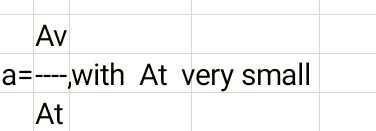
Suatu benda mengalami percepatan jika kecepatannya berubah. Kecepatan terdiri dari besar kecepatan dan arah kecepatan,
karenanya suatu benda mengalami percepatan jika:
- Only a large speed alias speed changes (constant velocity direction). Example 1: The car is initially silent, one second and then moving straight (constant direction) with a speed of 4 m / s. Speed aka large car speed changed from zero to 4 m / s so the car is said to experience acceleration. Example 2: The car originally moved straight (constant direction) with a speed of 4 m / s, one second and then the car stopped. Speed aka large car speed changed from 4 m / s to zero so the car is said to experience acceleration.
- Only the direction of the velocity changes (constant speed or speed). Direction speed = direction of movement = direction of movement. The direction of velocity changes the same as the direction of movement or the direction of the movement of the changed object.
- large and the direction of speed changes
Regular Straight Motion
One example of straight irregular motion is for example on a straight path and no obstacles, the vehicle can move at a steady pace for some time. But most of the movement changes speed.
When a car is moving at a steady pace of 2 km / min, this statement contains the meaning every minute the car travels a distance of 2 km.
More details look at the following table:
table relationship distance with time.
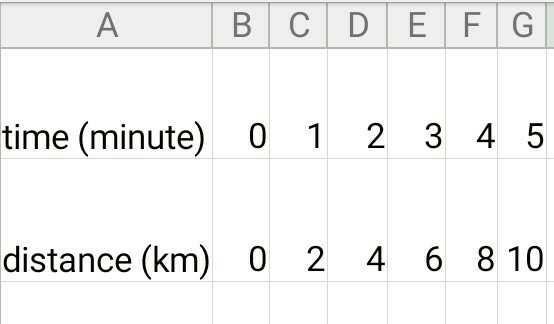
An object or object is said to move if it changes position or move. The displacement is relative to the original position or a reference point. When a student walks from his chair to the front of the class while holding a book, does the book also move?
The answer could be yes can also not depend on the reference point.
If the reference is the student's seats, then the book is said to move on the contrary if the reference is the pupil's hand, then the book is said to be immobile because it remains in the hand. Another basic thing to understand is that when discussing the issue of motion, then for vector quantities, the direction is very influential.
- To discuss matters of straight-line motion, we must understand the basic concepts of straight-line motion. An object is said to move straight irregularly if the Trajectory is straight
- Moves at a constant speed
- Acceleration equal to zero
The quantities to be understood in motion include:
- Speed (v) is a vector quantity that has a value and direction.
- Rate (v) is a scalar quantity that has only value.
- Displacement (s) is a vector quantity that has a value and direction.
- Distance (s) is a scalar quantity that has only value only.
- Time (t) is a scalar quantity
Straightforward Changed Motion
In a straight motion changes regularly the motion of an object may experience acceleration or deceleration. The motion of an accelerated object is called an uniformly accelerated regular motion, while a slowing motion is called a straight motion, which changes regularly.
Objects that move the longer the faster said the object is accelerating.
Some straight-line events change regularly in everyday life, among others, as follows:
- Accelerated car motion by pressing the accelerator.
- The motion of the car is slowed by pressing the brake pedal
- Gerak jatuh bebas buah mangga dari tangkainya
Mathematically accelerated formulated:

The problem model that often appears in straightforwardly changing motion material is basically not far from the main formula given. There are three main formulas in the straightforward uniform motion that we absolutely must master if we do not want to have difficulty in working on the issues of Straight Changed Motion.
The formula is presented in the illustration below:
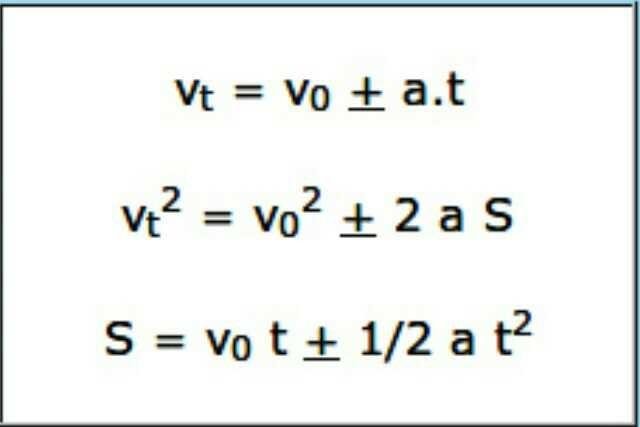
Information
(+) is used when the type of motion is accelerated GLBB and (-) if Straight Changed Motion is Regulated slowed.
By mastering the three main formulas we can solve straight-line problems irregularly easier.
the upward vertical motion formula or free fall motion is the same as the main formula of straight-shifting motion but we must change its acceleration to acceleration of gravity.
In vertical motion, the direction of motion greatly affects the acceleration value of gravity. Remember that if the object moves upward away from the center of the earth, then it will slow down because it defy gravity while the free fall will be accelerated by the force of gravity.
sample problems for straight-line motion changes regularly:
Is know:
vo = 0, t = 5 s, a = 8 m/s2 .
v = vo + at ⇒ v = 0 + 8 (5) ⇒ v = 40 m/s
s = vo.t + ½ a.t2 ⇒ s = 0 + ½ (8).(5)2 ⇒ s = 100m
Thus, the object velocity after 5 seconds is 40 m / s and travels 100 m.
Happy to share, follow me @feryhusaini

amazing
Thanks jarwok 😆
You got a 8.21% upvote from @allaz courtesy of @feryhusaini!
THIS IS A TRIAL RUN AND BETA TEST
Congratulations! Your post has been selected as quality content that deserves more attention.
I upvoted your contribution because to my mind your post is at least 30 SBD worth and should receive 70 votes. It's now up to the lovely Steemit community to make this come true. By the way, your post is listed on rank 6 of all truffles found today! You can find the top daily truffle picks here.
I am
TrufflePig, an Artificial Intelligence Bot that helps minnows and content curators using Machine Learning. I was created and am being maintained by @smcaterpillar. If you are curious how I select content, you can find an explanation here!Have a nice day and sincerely yours,

TrufflePigPS: Upvoting and resteeming my posts and comments will support paying for server costs and further development, thank you ;-)
Thanks you, I agree with you.
I will upvoting and resteeming your post.